Dissecting the New Dodge Charger Daytona SRT EV Concept
Dodge's Charger Daytona SRT concept reinvents the muscle car—and it's headed for production.
Capital One
Dodge, one of the V8 engine’s last bastions, is going electric. In August, the Stellantis-owned firm unveiled a close-to-production concept called the Charger Daytona SRT to preview how it plans to keep the muscle car alive as EVs gradually usurp internal combustion. We’ve seen numerous performance-oriented electric cars in the past few years, but this model promises to usher new features to the segment.
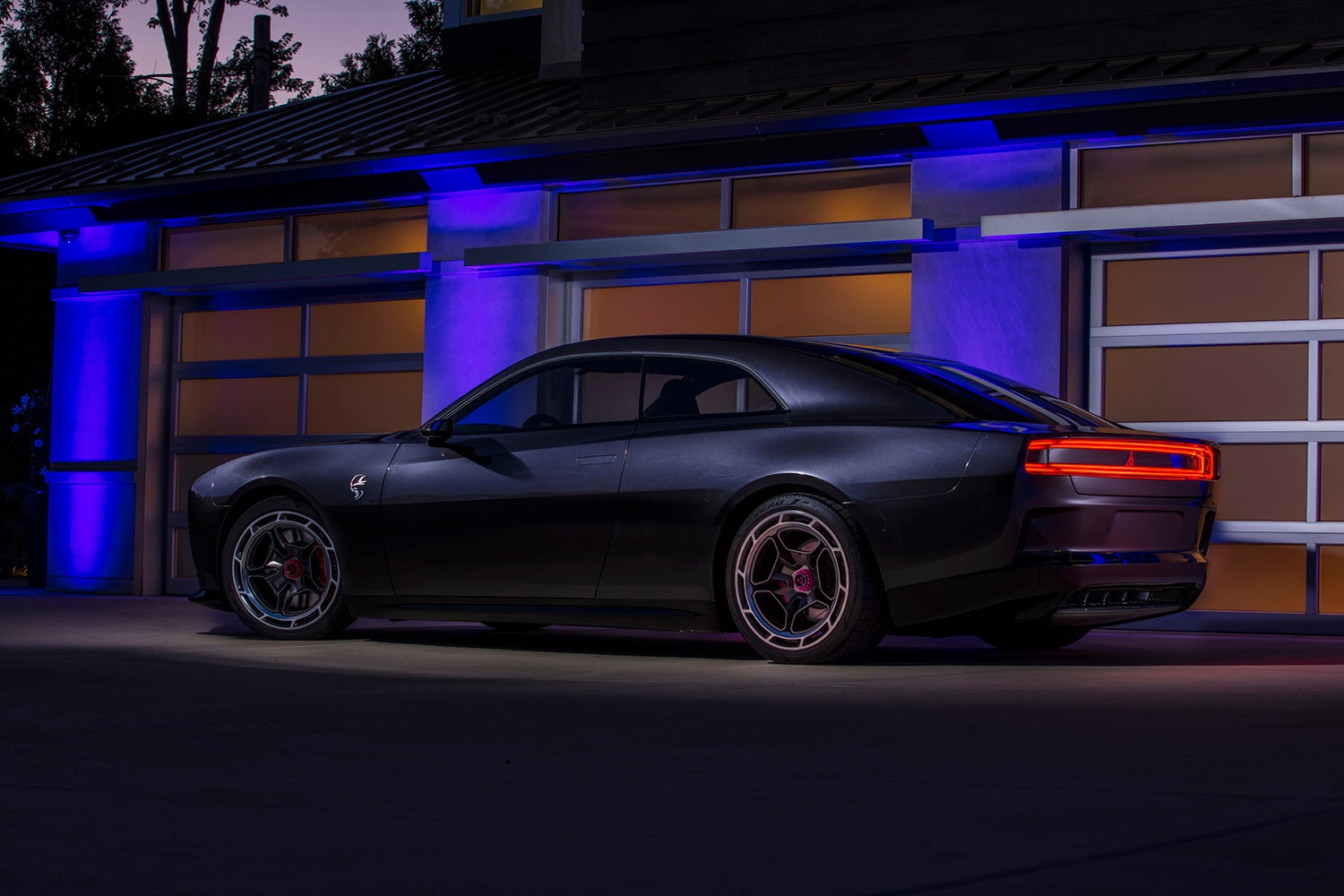 Dodge
Dodge
Dodge Charger Concept: Heritage-Laced Design
Perhaps to capitalize on an EV-centric name, though it could confuse the uninitiated, Dodge chose to call this two-door electric concept the Charger, not the Challenger. Despite this, the car is a direct replacement for the current Challenger, which also has two doors. When it reaches showrooms, presumably in 2024, the new Charger will stand out as the first production electric Dodge.
That represents a dramatic U-turn for a carmaker that has pegged its image on high-octane performance for more than five decades. Speaking during the concept’s unveiling, Dodge boss Tim Kuniskis argued that entering the EV segment is inevitable.
“We didn’t ask for the rules to change,” he said. “We didn’t want them to change. But they did. We can try to outrun them, but that would be a 9-second pass straight into extinction.”
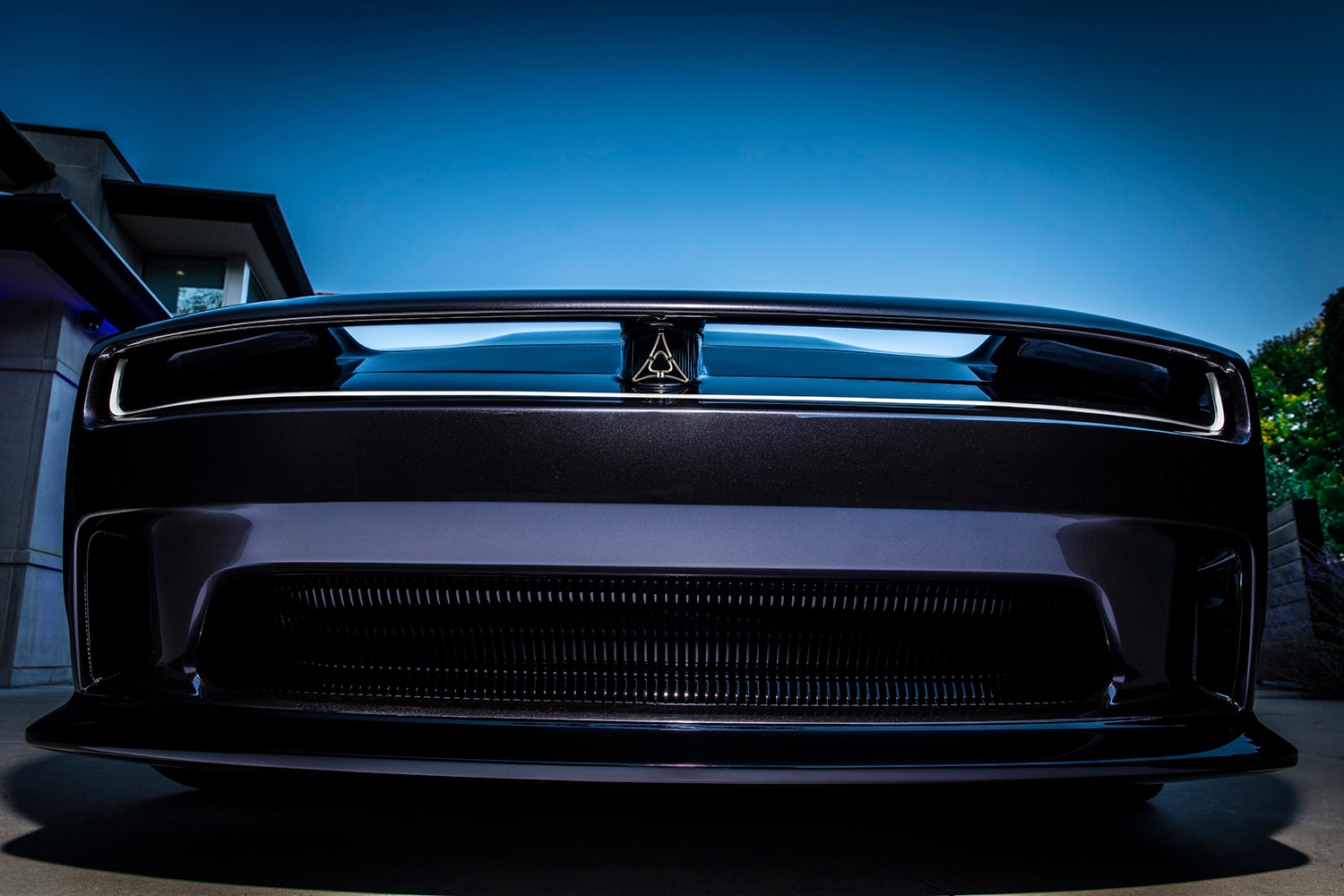 Dodge
Dodge
Visually, the Charger Daytona SRT eschews the trend of making EVs look futuristic and highly aerodynamic, and instead leans into its muscle car roots, with its boxy silhouette and styling cues borrowed from some of Dodge’s most emblematic models.
Dodge fitted the front end with a downforce-enhancing, rectangular pass-through, which it calls the R-Wing. “We’re willing to give up some range to look badass,” Kuniskis explained. That said, he asked his team to make the concept about 25% more aerodynamic than the current Charger, though it’s too early for Dodge to publish the coupe’s drag coefficient. “It’s a huge leap forward from where we are today,” Kuniskis promised.
Further, a curved LED light bar underlines the R-Wing opening; it’s reminiscent of the chrome trim seen on some early versions of the Charger. Plus, the brand is leveraging its heritage to bring enthusiasts into the EV fold, tagging the EV’s nose with the Fratzog badge, which Dodge used from 1962 through 1976.
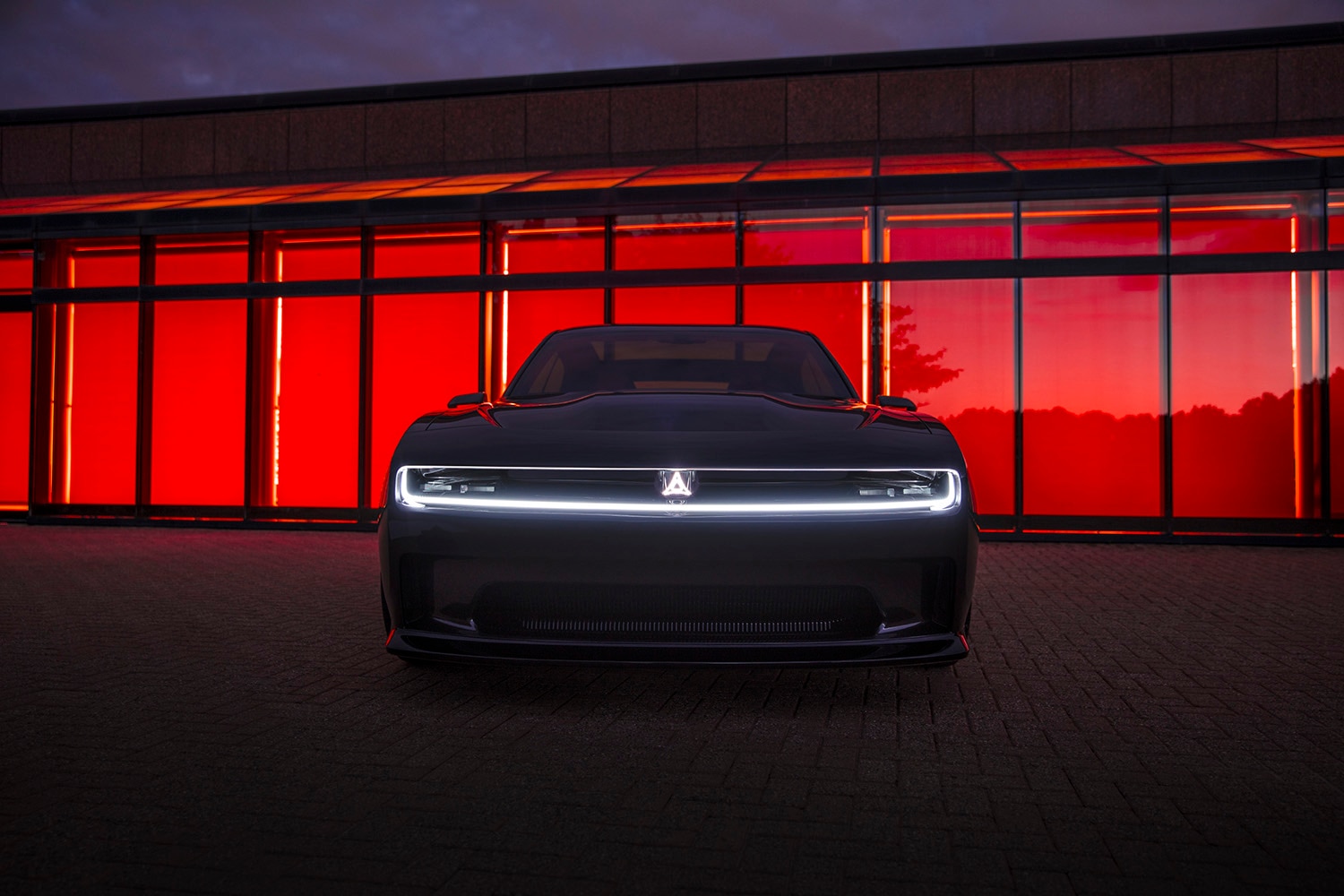 Dodge
Dodge
Dodge Charger Daytona SRT: More Practical Than It Looks
Dodge toned down the heritage-inspired design in the cabin. The driver faces a curved, 16-inch digital instrument cluster, supplemented by a head-up display. Off to the right sits a 12.3-inch infotainment screen—the largest the firm has ever put in a car. Circuitboard-like graphics scattered throughout the interior and a lightning bolt on the accelerator pedal remind the occupants that electricity powers this car, while a modern version of a pistol-grip shifter adds a classic muscle car touch.
Dodge put a big focus on practicality because, according to Kuniskis, “No one wants cars anymore.” Buyers demand the functionality of an SUV, and giving the Charger a big cargo hold accessed via a hatch was a way to position it as a viable daily driver. The rear seats fold flat, too, extending that space. Keep in mind that the Charger is still in the concept stage. What you see now may change before production begins.
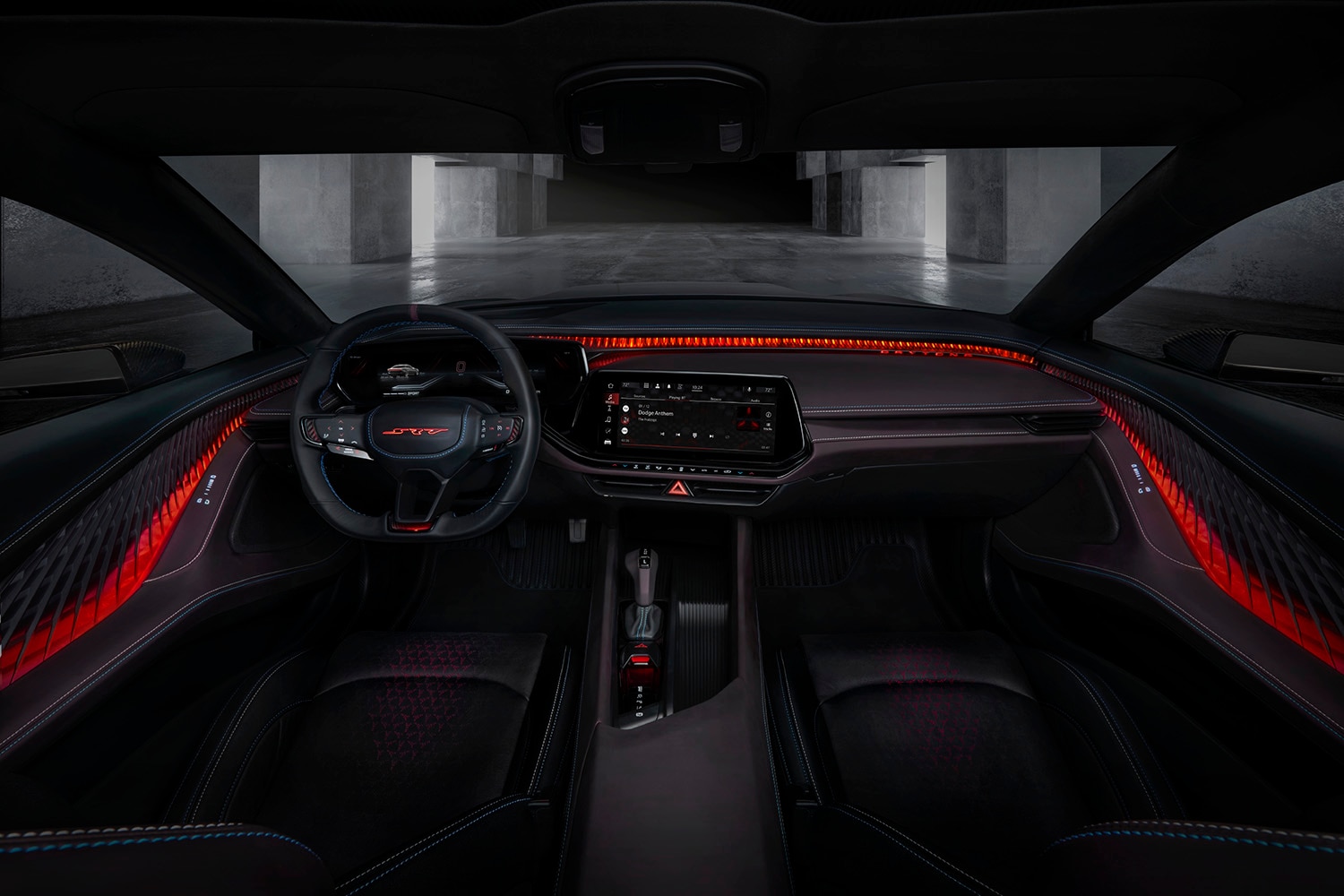 Dodge
Dodge
An Electric Vehicle as Loud as a V8?
The Charger Daytona SRT concept uses Dodge’s new 800-volt Banshee architecture and will come standard with all-wheel drive. Horsepower and torque figures remain under wraps, but Dodge pledged to offer the new electric vehicle with three power levels. Drivers will also have several driving modes to choose from, including Slam, Drift, Drag, and Donut, plus a push-to-pass function called PowerShot that briefly increases horsepower at the press of a button.
One of the vehicle’s unusual features is the Fratzonic Chambered Exhaust. No, this system is not channeling a burnt mixture of air and gasoline out of a combustion chamber; it’s merely artificial sound, intended to add character to the electric Charger. That goes against the EV grain, where silence is golden… or at least is an inherent characteristic.
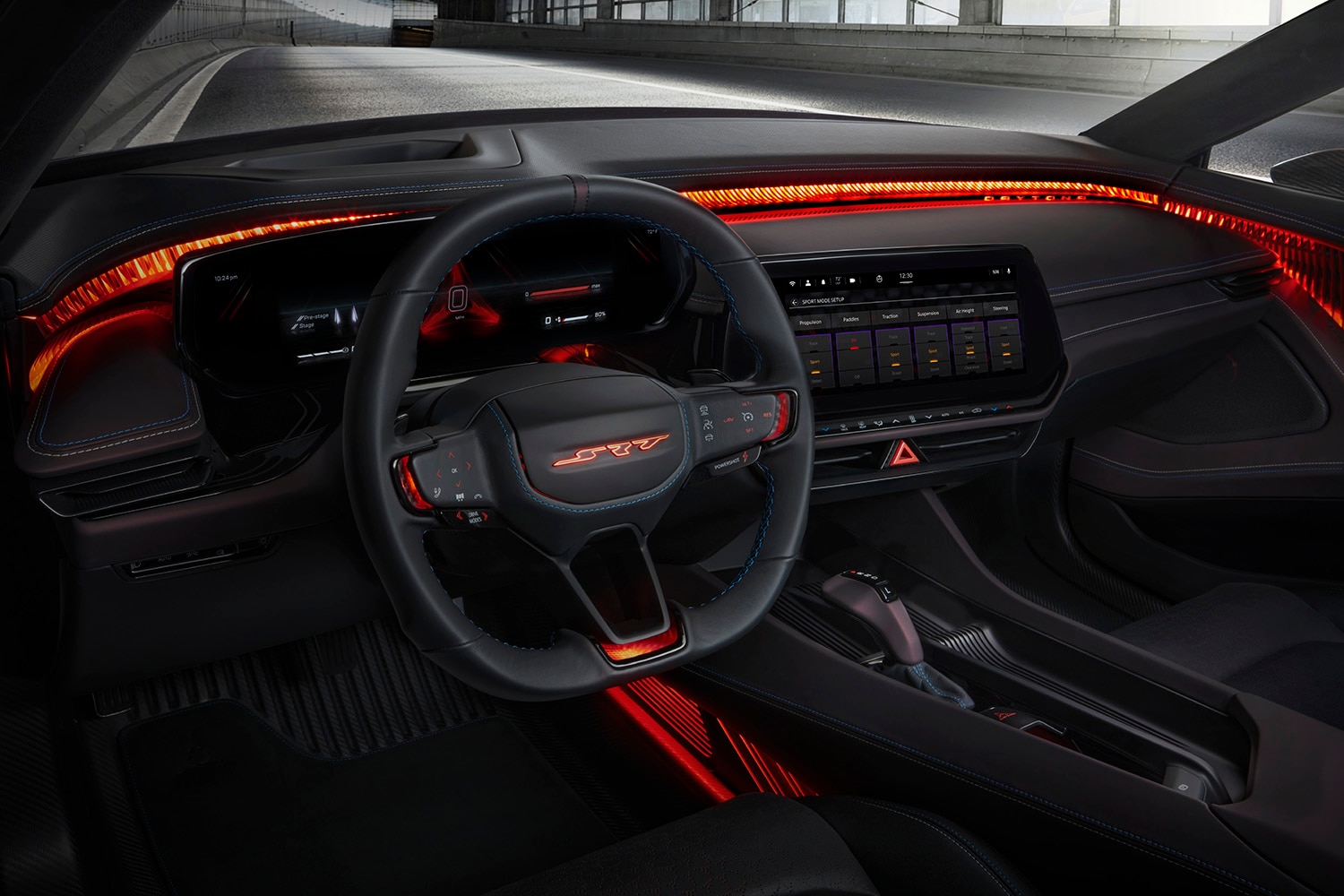 Dodge
Dodge
But according to Kuniskis, “I don’t care if it’s an EV. If it’s a Dodge, it needs a loud pedal.” The Fratzonic system includes an amplifier and a tuning chamber mounted in the back of the car and supposedly makes the EV as loud as a Hellcat, at 126 decibels.
Another unexpected feature is the Charger’s multi-speed transmission. An EV doesn’t need a multi-speed transmission because an electric motor makes the same amount of torque regardless of how quickly it’s spinning. So most electric cars feature simple single-speed transmissions. But Dodge’s system, named eRupt, stops the flow of torque for a few milliseconds to simulate a shift. Kuniskis notes it makes the Charger more fun to drive, not quicker. It also makes it more familiar.
“Everyone knows EVs are fast,” Kuniskis said. “Even the boring ones are quick. The instantaneous torque is impossible to deny, but the visceral experience of a muscle car is more than that. It’s more chainsaw than it is cordless drill, so we made sure that the driving experience will be marked with familiar Dodge attributes.”
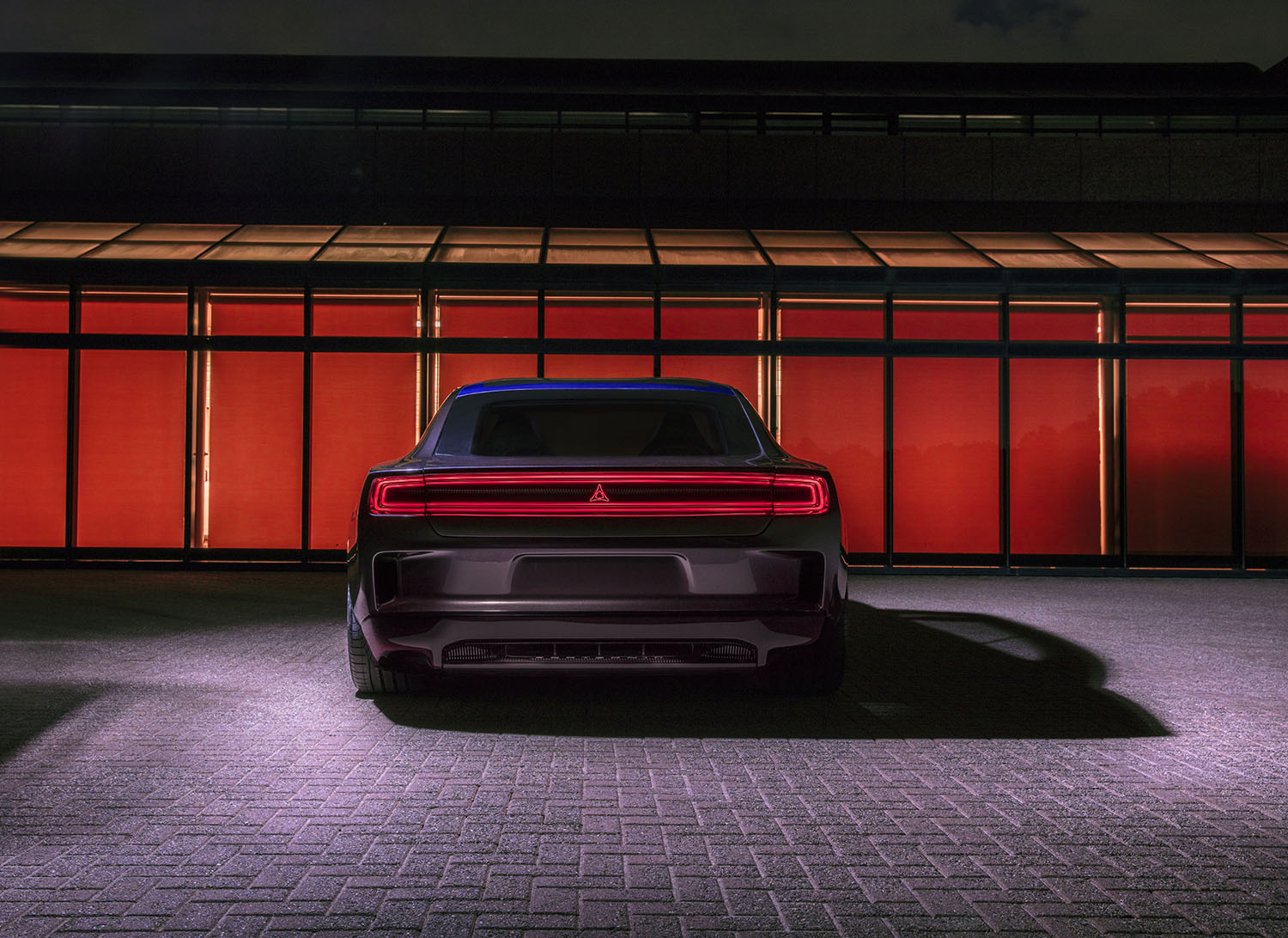 Dodge
Dodge
What About the Current Challenger and Charger?
Dodge will end production of the current-generation Challenger and Charger after the 2023 model year. It will send off both cars with a series of seven limited-edition models, all of which will make their debut before the end of 2022. The first—the Challenger Shakedown—brings to life elements of a concept shown at the 2016 SEMA show. Dodge will build only 1,000 examples.
The brand has also made it easy for Challenger enthusiasts to commission a convertible conversion through its dealers. Official partner, Drop Top Customs will handle the modifications. Pricing starts a hair below $26,000, excluding the cost of the 2022 or 2023 donor car.
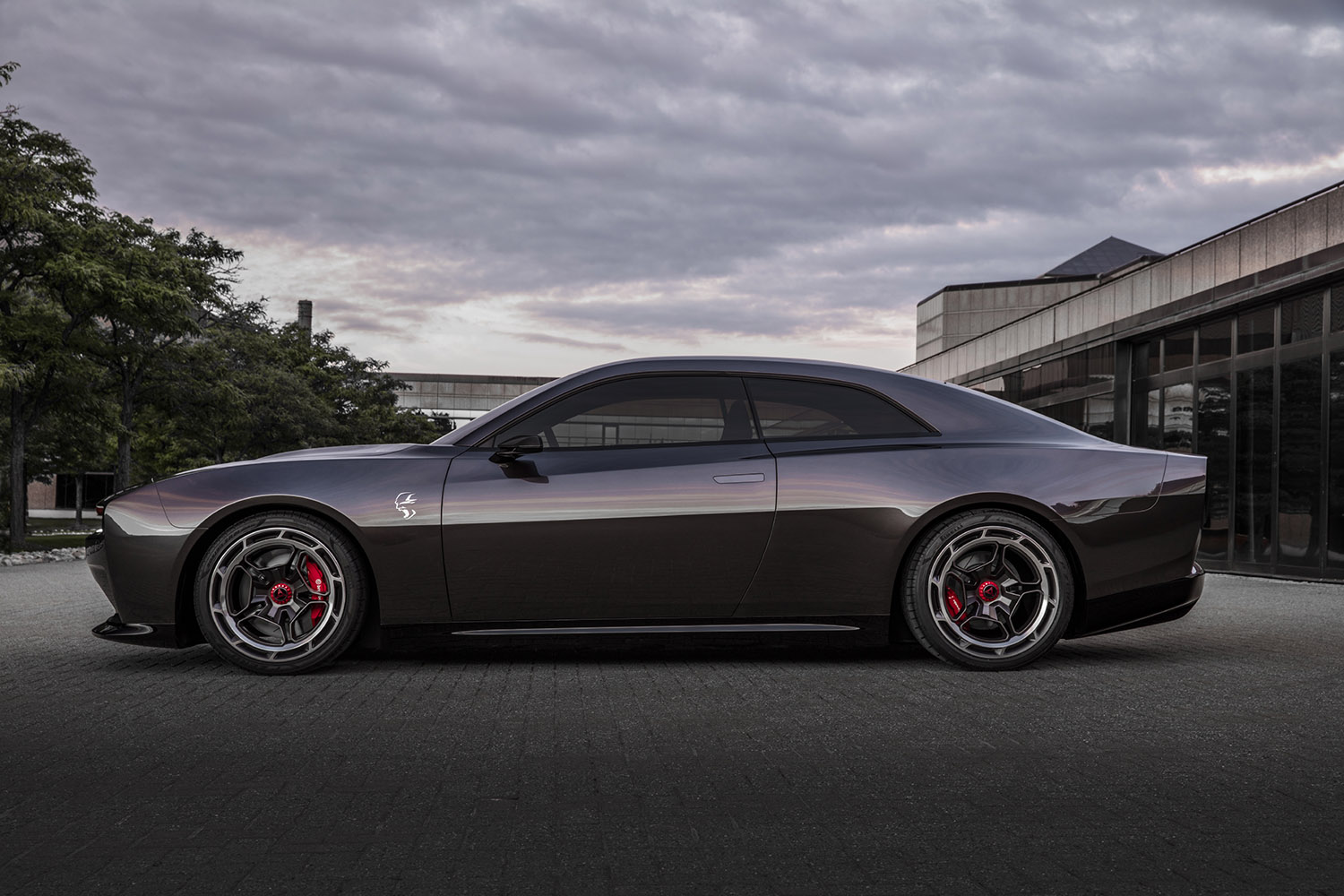 Dodge
Dodge
Written by humans.
Edited by humans.
 Ronan Glon
Ronan GlonRonan Glon is an American journalist and automotive historian based in France. He enjoys working on old cars and spending time outdoors seeking out his next project car.
Related articles
View more related articles